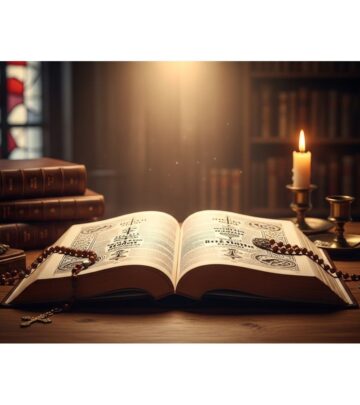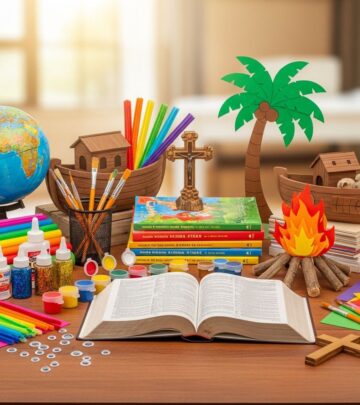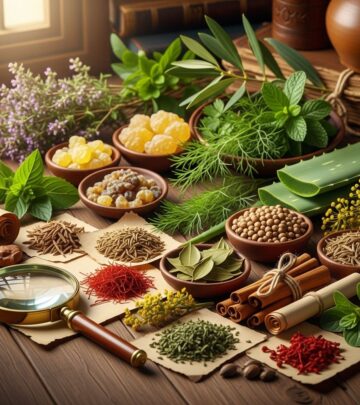The History and Traditions of Diwali: Festival of Lights
Discover how age-old legends and colorful customs unite communities in joy and renewal.

Diwali, also known as Deepavali, is much more than a festival; it is a radiant tapestry of ancient myths, diverse rituals, and vibrant celebrations that illuminate homes and hearts across India and the world. As the Festival of Lights, Diwali’s origins, legends, and customs span millennia and cut across religious and cultural boundaries, making it one of the most beloved holidays globally.
What Is Diwali?
Deriving its name from the Sanskrit Deepavali, which means “row of lights,” Diwali marks the symbolic triumph of light over darkness, good over evil, and knowledge over ignorance. Across five days—replete with glowing lamps, dazzling fireworks, and joyous family gatherings—communities cleanse and decorate their homes, share sweets, perform religious rituals, and celebrate the renewal of prosperity and hope.
While primarily associated with Hinduism, Diwali is also celebrated by Jains, Sikhs, Buddhists, and people of Indian heritage worldwide, each ushering in their own meanings and traditions.
Origins and Early History of Diwali
The precise origins of Diwali are difficult to pinpoint due to its roots in ancient agrarian societies and the assimilation of various festive customs over centuries.
Historians believe Diwali likely started as a fusion of South Asian harvest festivals, a time when rural communities expressed gratitude for the prosperity of the autumn crop and prayed for continued fortune through the winter.
The earliest textual references to Deepavali appear in Sanskrit literature, including the Padma Purana, Skanda Purana, and plays like Nagananda by Emperor Harsha (7th century CE), which detail the lighting of lamps and exchanging of gifts.
Accounts from foreign travelers, such as Persian historian Al Biruni (11th century) and Venetian merchant Niccolò de’ Conti (15th century), describe the awe-inspiring spectacle of homes and temples glowing all night with oil lamps, a tradition still alive today.
Legends and Mythological Stories of Diwali
Diwali’s narratives are as diverse as India itself, with different regions and religions placing emphasis on particular tales and heroes. Here are the principal legends commonly associated with the festival:
- Lord Rama’s Return to Ayodhya (North India): In the Hindu epic Ramayana, Diwali commemorates Lord Rama’s victorious return to Ayodhya after 14 years in exile and his defeat of the demon king Ravana. Residents celebrated by illuminating the city with oil lamps (diyas), signifying the vanquishing of evil and the ushering in of hope.
- Goddess Lakshmi’s Blessings: In many Indian states, Diwali honors Lakshmi, the goddess of wealth, fortune, and prosperity. Traditions include cleaning and decorating homes to welcome her blessings, as well as business communities marking the start of the new financial year.
- Lord Krishna’s Victory Over Narakasura (South India): In southern India, Deepavali (as it is known) celebrates Lord Krishna’s defeat of the demon Narakasura, who had terrorized the earth. In this context, Deepavali is often a one-day event commemorating the liberation of the world from darkness.
- King Bali and Lord Vishnu (West India): Western regions tell the story of King Bali, a powerful ruler who was sent to the underworld by Lord Vishnu (disguised as the dwarf Vamana). His sacrifice is remembered during Diwali, symbolizing humility and the restoration of cosmic order.
- Goddess Kali (Eastern India): Particularly in Bengal, the festival coincides with the worship of Kali, the fierce goddess who fought the forces of evil. Her image, depicted amidst the festival of lamps, represents destruction of darkness and ignorance.
- Other Religious Traditions: Jains observe Diwali as the day Lord Mahavira attained nirvana (liberation), Sikhs mark the release of Guru Hargobind Ji from captivity (Bandi Chhor Divas), and some Buddhists recognize the conversion of Emperor Ashoka to Buddhism.
How Diwali Is Celebrated Across Religions and Regions
While the ethos of Diwali—the celebration of goodness, hope, and renewal—is universal, the religious and regional customs vary. Here’s a closer look:
| Community/Region | Key Observances | Symbolism |
|---|---|---|
| Hindus (North India) | Return of Rama, Lakshmi Puja, lighting diyas, fireworks, family feasts | Triumph of good over evil, homecoming and renewal |
| Hindus (South India) | Naraka Chaturdashi, Krishna’s victory, oil bath, early morning rituals | Destruction of evil, spiritual purification |
| Hindus (West India) | Veneration of King Bali, start of new financial year | Humility, prosperity, renewal |
| Hindus (Bengal/East India) | Kali Puja, night-long worship, artistic rangoli patterns | Divine power, protection from evil |
| Jains | Mahavira’s nirvana, lighting of lamps, scripture readings | Spiritual liberation, victory of knowledge |
| Sikhs | Bandi Chhor Divas, Golden Temple illumination, community services | Freedom, justice, unity |
| Buddhists (Newar) | Worship of Lakshmi, rituals for wealth and luck | Fortune, renewal |
Rituals and Traditions of Diwali
Diwali is marked by an array of customs and rituals, with each day carrying unique significance. The primary emphasis lies on cleansing spaces, honoring gods and ancestors, celebrating community, and sharing the bounty of the harvest:
- Cleaning and Decorating Homes: Spaces are swept, whitewashed, and adorned with rangoli (colorful floor art), flowers, and glowing diyas or electric lights. This act welcomes deities and symbolizes the removal of negativity.
- Pujas (Prayers): Worship of Lakshmi and Ganesha (the god of beginnings and remover of obstacles) is performed with offerings of sweets, coins, flowers, and gold to invite prosperity.
- Lighting Diyas and Fireworks: Oil lamps line windowsills, courtyards, and rooftops; spectacular fireworks fill the night sky, driving away darkness and bad spirits.
- Feasting and Sweets: Sharing delicacies (mithai) with family, friends, and neighbors reinforces bonds and gratitude. Traditional foods vary by region and community.
- Gifting: Exchanging presents, sweets, and blessings fosters joy and strengthens social connections.
- New Clothes and Jewelry: Adorning oneself with new clothing and jewelry on Diwali day signifies a fresh start and auspiciousness.
- Charity: Donating to the less fortunate and feeding the poor underscores the core value of compassion and sharing.
The Five Days of Diwali
Although the scope and sequence may vary regionally, Diwali is commonly celebrated over five days, each with distinctive traditions:
- Dhanteras: The first day marks the beginning of festivities. Homes are cleaned and decorated; people purchase new utensils, gold, or silver, symbolizing prosperity. Offerings are made to Dhanvantari, the deity of health and medicine.
- Naraka Chaturdashi (Choti Diwali): The second day commemorates Krishna’s victory over Narakasura; people wake early, bathe, and dons new clothes, often applying fragrant oils.
- Main Diwali (Lakshmi Puja): The third and central day involves the grand worship of Lakshmi. Homes and temples are illuminated with lamps, and families gather for prayers, feasts, and the exchange of gifts.
- Govardhan Puja (Padva/Annakut): The fourth day varies: in some regions, it honors Lord Krishna’s feat of lifting Mount Govardhan; in others, it commemorates the bond between husbands and wives. Large feasts and processions are common.
- Bhai Dooj (Bhau Beej): The fifth day is for celebrating the love between brothers and sisters, with shared meals, rituals, and blessings.
Diwali in Modern Times
Today, Diwali celebrations have evolved and expanded beyond India’s borders to become a cultural showcase in countries like Nepal, Sri Lanka, Malaysia, Singapore, Fiji, Trinidad and Tobago, the United Kingdom, United States, Canada, and Australia.
Modern customs may incorporate electric lighting, elaborate themed parties, and community festivals. However, the values of renewal, unity, gratitude, and hope remain unchanged. Many Indian businesses still begin their new fiscal year on Diwali, and families connect across continents, sharing greetings and virtual celebrations.
Symbols and Deeper Meaning of Diwali
More than a holiday, Diwali serves as a spiritual reminder to shed the darkness of anger, ignorance, and negativity, and to cultivate compassion, wisdom, and light. The glowing lamps, bursting fireworks, and joyous gatherings act as metaphors for this inner transformation.
Key Diwali symbols include:
- Diyas: Small oil lamps representing hope and new beginnings.
- Rangoli: Intricate patterns created at entrances symbolizing joy and positive energy.
- Fireworks: The triumph of light, warding off negativity and evil.
- Sweets: The sweetness of life, prosperity, and sharing.
- New Clothes: Fresh start and auspicious fortune.
Diwali Around the World
Large Indian diaspora communities have established Diwali as a vivid cultural and public festival in cities around the world. Landmarks like London’s Trafalgar Square, New York’s Times Square, and Sydney’s Darling Harbour host spectacular open-air Diwali events featuring music, dance, food fairs, performances, and group prayers. These celebrations foster multicultural understanding and showcase the richness of Indian heritage globally.
A Note on Sustainability
Modern Diwali celebrations, while dazzling, also bring environmental challenges: air pollution from fireworks, increased energy use, and waste from packaging and decorations. Many communities and families are making conscious efforts to adopt greener practices:
- Using eco-friendly diyas and LED lights
- Opting for plant-based colors for rangoli
- Choosing locally sourced, minimal packaging sweets and gifts
- Limiting or opting out of fireworks displays
These changes help preserve the earth while still honoring Diwali’s values of renewal, gratitude, and abundance.
Frequently Asked Questions (FAQs)
Q: When is Diwali celebrated each year?
A: Diwali falls on the new moon (Amavasya) of the Hindu lunar month of Kartika, usually in October or November. The exact date changes yearly based on the moon’s calendar.
Q: Is Diwali only a Hindu festival?
A: No, while rooted in Hindu culture, Diwali is also observed by Jains, Sikhs, some Buddhists, and many Indian communities worldwide, each with its own legends and meanings.
Q: What is the significance of lighting diyas (oil lamps)?
A: Lighting diyas symbolizes dispelling darkness and ignorance, inviting light, prosperity, and wellbeing into homes and communities.
Q: What traditional foods are enjoyed during Diwali?
A: Diwali is famous for an array of sweets (mithai), snacks, and festive dishes, varying by region. Popular examples include ladoos, barfi, jalebi, gujiya, chakli, and samosas.
Q: How can Diwali be celebrated more sustainably?
A: Choose eco-friendly diyas, limit fireworks, recycle decorations, use plant-based rangoli colors, and share excess food with those in need to align with the festival’s spirit of gratitude and stewardship.
The Enduring Spirit of Diwali
Diwali’s history and traditions weave together mythology, spirituality, and cultural unity, offering lessons that remain profoundly relevant: cherish light, seek knowledge, cultivate compassion, and celebrate the bonds that connect us all. No matter where or how it is celebrated, Diwali’s luminous message continues to inspire hope and harmony in an ever-changing world.
References
- https://en.wikipedia.org/wiki/Diwali
- https://www.thecollector.com/what-is-the-history-and-significance-of-diwali/
- https://www.perniaspopupshop.com/about-occasions/diwali
- https://global-lt.com/blog/diwali-a-celebration-of-light-history-and-tradition
- https://www.britannica.com/topic/Diwali-Hindu-festival
- https://www.trafalgar.com/real-word/diwali-story/
- https://cafespice.com/diwali-festival-of-lights/
- https://www.goodhousekeeping.com/holidays/a37680263/what-is-diwali-history-story-celebration-facts/
Read full bio of medha deb











